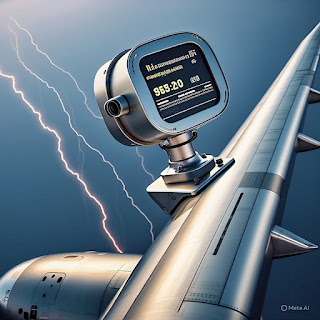NIST Supports Composite Materials Standards Harmonization
CTL’s Smart Connected Manufacturing Systems Group and the Longterm Archiving and Retrieval (LOTAR) Consortium have supported multi-year efforts to harmonize composite material standards. ASME Y14.37 enables engineering practices for the definition of composite parts, and ISO 10303 STEP (STandard for the Exchange of Product model data) enables the representation and exchange of composite part information.
Harmonization of these standards provides shared vocabularies across the model-based engineering disciplines that ease product lifecycle communication, improve product quality, reduce time to market, facilitate implementation of newer technologies, and reduce manufacturing costs. While these standards are related, they are developed in different communities. Over time, advances in manufacturing of composite parts led to the standards becoming out of sync.
Propagation of ISO 10303 STEP composites capabilities from ISO 10303-242 Managed model-based 3D engineering (AP242) to ISO 10303-238 Model-based integrated manufacturing (AP238) will occur in the coming year. ISO 10303 is widely used in the industrial base, with AP242 focused on model-based engineering and design and AP 238 focused on manufacturing process planning. Closing the gaps between design and process planning will increase advanced manufacturing capabilities by improving the route from engineering and design to the process plans that operate the machines.
Composite materials are increasingly used in aerospace due to the reduction in the weight of parts, which leads to increased fuel efficiency, as well as their strength and durability. The increased demand in automotive and transportation, aerospace and defense, and wind energy market segments is projected to raise the global composites market value from $113.7 billion (U.S. dollars) in 2022 to $168.6 billion by 2027. Harmonization of these standards will be vital to keep pace with the demand.
Harmonization has resulted in the addition of several new capabilities, including additional rosette (major and minor fiber direction specification) types for plies and ply pieces within a laminate table; the ability to capture both nominal Engineering and Manufacturing Edge of a Part/Ply (EEOP, MEOP); and specifying Limited Length or Area Indicator (LLAI) requirements. The description of these additions shows the uniqueness of the needs of Manufacturing composite structures.
Website Link : composite.sciencefather.com
Award Nomination : https://x-i.me/copnom
Abstract Submission : https://x-i.me/compabst2
.
Twitter : https://x-i.me/twtcop
Facebook : https://x-i.me/fbcop
Instagram : https://x-i.me/intcop
Linkedin : https://x-i.me/lnkcop
Printerest :https://x-i.me/prtcop
Youtube : https://x-i.me/coptube
#sciencefather,#Professor, #Lecturer, #Scientist, #Scholar, #Researcher, #Analyst, #Engineer, #Technician, #Coordinator, #Specialist, #Writer, #Assistant, #Associate, #Biologist, #Chemist, #Physicist, #Statistician, #DataScientist, #Consultant, #Coordinator, #ResearchScientist, #SeniorScientist, #JuniorScientist, #PostdoctoralResearcher, #LabTechnician, #ResearchCoordinator, #PrincipalInvestigator, #ClinicalResearchCoordinator, #GrantWriter, #R&DManager,#NIST, #CompositeMaterials, #StandardsHarmonization, #MaterialScience, #EngineeringStandards, #AdvancedMaterials, #Manufacturing, #ResearchAndDevelopment, #TechnologyStandards




Comments
Post a Comment